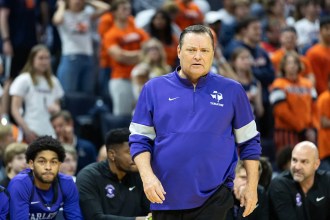Florida State University (FSU) has made significant strides in reviving its football program, transitioning from a dismal 2-10 season in 2024 to a hopeful start with a 3-0 record in 2025. The transformation has left fans intrigued, prompting the pressing question: How did Florida State turn things around so quickly? A myriad of factors contributed to this revitalization, ranging from pivotal coaching changes and player transfers to a renewed focus on team dynamics and leadership.
One crucial factor in Florida State’s turnaround has been the leadership of head coach Mike Norvell. Following a year marked by disappointment, Norvell recognized that change was essential not only in terms of player personnel but also in developing a more cohesive and competitive team culture. The 2024 season exposed deficiencies in leadership and team chemistry, which Norvell was determined to rectify. His solution: instilling a competitive environment within the team that emphasized mutual accountability.
### Cultivating a Competitive Spirit
To foster a culture of competition and resilience, Norvell introduced unique training methods, such as engaging players in tug-of-war challenges. These competitions became a staple of the team’s training regimen, aiming to build strong interpersonal bonds among players and cultivate a winning mentality. The exercises encouraged camaraderie, pushing teammates to motivate one another and take ownership of their performance. As linebacker Justin “Juice” Cryer noted, the focus was on instilling a “fighting” attitude in the players, with an emphasis on outworking previous limits.
This nurturing of a competitive spirit was evident in quarterback Tommy Castellanos, who arrived at FSU with a clear vision for success. His confidence and determination not only influenced his play but also inspired teammates to elevate their performance. Castellanos’s presence quickly solidified him as a central figure in the team’s identity, setting the tone for improved work ethic and collective ambition. Players began to rally around his leadership, further contributing to the cohesive atmosphere critical for success.
### Strategic Coaching Enhancements
Norvell also undertook a comprehensive revamp of his coaching staff. Most notably, the appointment of offensive coordinator Gus Malzahn was a strategic move designed to fortify the team’s offensive dynamics. By relinquishing play-calling duties himself, Norvell was able to focus on broader team management, ensuring that every aspect of the program received adequate attention. Malzahn’s expertise catalyzed a significant transformation in FSU’s offense, shifting the team from one of the worst rushing units to a competitive powerhouse.
The introduction of experienced transfers, particularly center Luke Petitbon from Wake Forest, played a vital role in bolstering the offensive line, which is crucial for establishing a productive rushing attack. Petitbon’s leadership and commitment to mastering the playbook were instrumental in streamlining communication and execution on the field. With a revitalized blocking scheme, FSU’s offensive unit became more dynamic and efficient, setting the stage for impressive performances, including a game-changing victory against Alabama.
### Defensive Overhaul
The transformation extended beyond the offense; the defensive side also underwent significant improvement under new coordinator Tony White. By focusing on physicality and effective communication, White established a defensive scheme that prioritized accountability and adaptability. This approach facilitated enhanced chemistry among players, resulting in improved execution on the field, particularly in pressing situations.
Cryer’s initial skepticism turned into confidence as he learned about White’s defensive strategies, which promised versatility. The proactive engagement with players and emphasis on transparency led to an environment where players felt empowered to ask questions and take ownership of their roles on the team.
### Team Solidarity Through Adversity
Tragedy struck during the season with the shooting of freshman linebacker Ethan Pritchard, but the team rallied around this adversity. Norvell consistently updated the players about Pritchard’s condition, further solidifying the bond among the players and uniting them for a common purpose. The incident underscored the importance of teamwork and resilience in the face of life’s challenges, motivating players to elevate their performance for their beleaguered teammate.
### Building Towards Future Success
Despite the promising start, the Seminoles understand that their journey is far from complete. As they head into the heart of their ACC schedule, the team is focused on continuous improvement. Defensive adjustments will be crucial now that rival teams are beginning to formulate strategies to counter FSU’s strengths. Keeping the momentum alive requires constant adaptation and honing of skills as they strive for higher objectives.
Norvell’s commitment to player development extends beyond the football field. Each year, he assigns a book to facilitate discussions on personal growth and accountability. This season’s reading, “Make Your Bed” by Admiral William McRaven, serves as a metaphor for how small daily actions contribute to significant life changes—an ethos that resonates deeply with the FSU football program’s current trajectory.
### Conclusion
In summary, Florida State’s rapid resurgence can be attributed to a multifaceted strategy that hinges on improved leadership, a concentrated effort on fostering team dynamics, and substantial coaching and player acquisitions. Mike Norvell’s proactive approach to revamping both the team’s culture and structure has successfully reinvigorated the program.
With a newfound competitive spirit and unyielding determination, the Seminoles are eager to build upon their successes, aiming not just to reclaim their place in college football but to grow into a formidable force within the ACC. As they advance through the season, the lessons learned from last year’s struggles, now transformed into fierce determination, will undoubtedly serve as the bedrock of their continued success. Whether or not FSU can maintain this momentum remains to be seen, but the journey thus far has painted a picture of hope and tenacity for one of college football’s storied programs.
Source link







